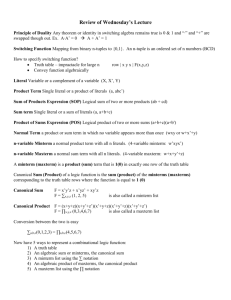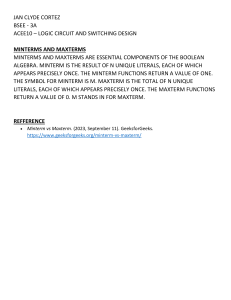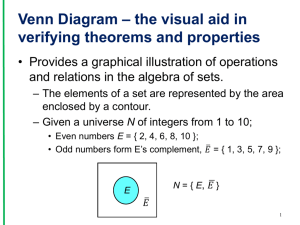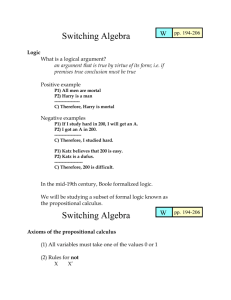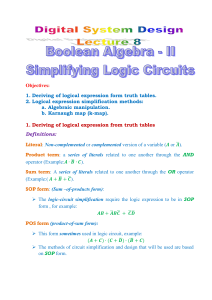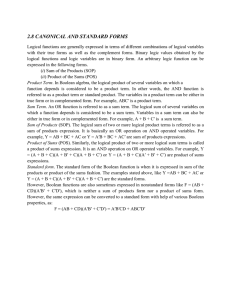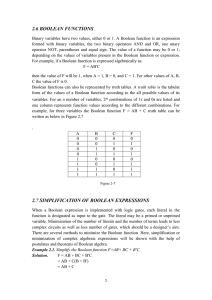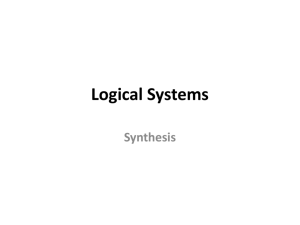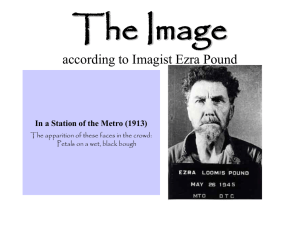Representation
advertisement
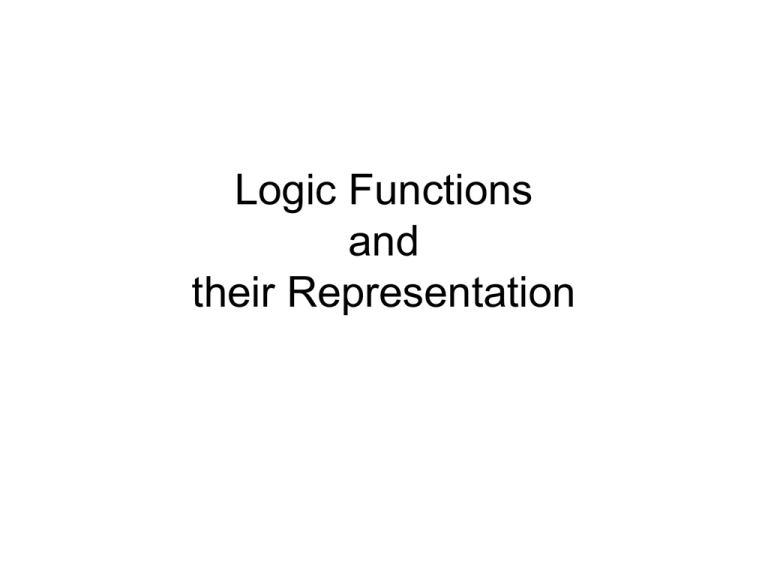
Logic Functions and their Representation Combinational Networks x1 x2 f xn Logic Functions and their Representation Slide 2 Logic Operations • Truth tables x y AND xy 0 0 0 0 0 1 1 0 0 1 1 0 0 0 1 1 0 1 1 1 0 0 1 1 1 1 1 1 1 0 0 0 Qui ckTime™ and a TIFF (LZW) decompressor are needed to see this pi cture. Quic kT ime™ and a T IFF (LZW) dec ompres sor are needed to s ee this pi cture. OR NOT NAND NOR EXOR xy x xy x xy y QuickT ime™ and a T IFF (LZW) decompressor are needed to see this pict ure. Quic kT ime™ and a QuickTime™ and a T IFF (LZW) decompres sor TIFF (LZW) decompressorare needed to see this pic ture. are needed to see t his picture. Logic Functions and their Representation Quic kT ime™ and a T IFF (LZW) decompres sor are needed to see this pic ture. Slide 3 SOP and POS • Definition: A variable xi has two literals xi and xi. A logical product where each variable is represented by at most one literal is a product or a product term or a term. A term can be a single literal. The number of literals in a product term is the degree. A logical sum of product terms forms a sum-of-products expression (SOP). A logical sum where each variable is represented by at most one literal is a sum term. A sum term can be a single literal. A logical product of sum terms forms a product-of-sums expression (POS). Logic Functions and their Representation Slide 4 Minterm • A minterm is a logical product of n literals where each variable occurs as exactly one literal • A canonical SOP is a logical sum of minterms, where all minterms are different. • Also called canonical disjunctive form or minterm expansion Logic Functions and their Representation Slide 5 Maxterm • A maxterm is a logical sum of n literals where each variable occurs as exactly one literal • A canonical Pos is a logical product of maxterms, where all maxterms are different. • Also called canonical conjunctive form or maxterm expansion Show an example Logic Functions and their Representation Slide 6 Shannon Expansion • Theorem: An arbitrary logic function f(x1,x2,…,xn) is expanded as follows: f(x1,x2,…,xn) = x1f(0,x2,…,xn) x1f(1,x2,…,xn) (Proof) When x1 = 0, = 1f(0,x2,…,xn) 0f(1,x2,…,xn) = f(0,x2,…,xn) When x1 = 1, similar Logic Functions and their Representation Slide 7 Expansions into Minterms • Example: Expand f(x1,x2,x3) = x1(x2 x3) • Example: minterm expansion of an arbitrary function • Relation to the truth table • Maxterm expansion (duality) Logic Functions and their Representation Slide 8 Reed-Muller Expansions • EXOR properties (x y) z = x (y z) x(y z) = xy xz xy=yx xx=0 x 1 = x Logic Functions and their Representation Slide 9 Reed-Muller Expansions • Lemma xy = 0 x y = x y (Proof) () Let xy = 0 x y = xy xy = (xy xy) (xy xy) = x y () Let xy ≠ 0 x = y = 1. Thus x y = 0, x y = 1 Therefore, x y ≠ x y Logic Functions and their Representation Slide 10 • An arbitrary 2-varibale function is represented by a canonical SOP f(x1,x2) = f(0,0)x1x2 f(0,1)x1x2 f(1,0)x1x2 f(1,1) x1x2 Since the product terms have no common minterms, the can be replaced with f(x1,x2) = f(0,0)x1x2 f(0,1)x1x2 f(1,0)x1x2 f(1,1) x1x2 Next, replace x1= x1 1, and x2= x2 1 Show results! Logic Functions and their Representation Slide 11 PPRM • An arbitrary n-variable function is uniquely represented as f(x1,x2,…,xn) = a0 a1x1 a2x2 … anxn a12 x1x2 a13 x1x3 … an-1,nxn-1xn … a12…nx1x2…xn Logic Functions and their Representation Slide 12
